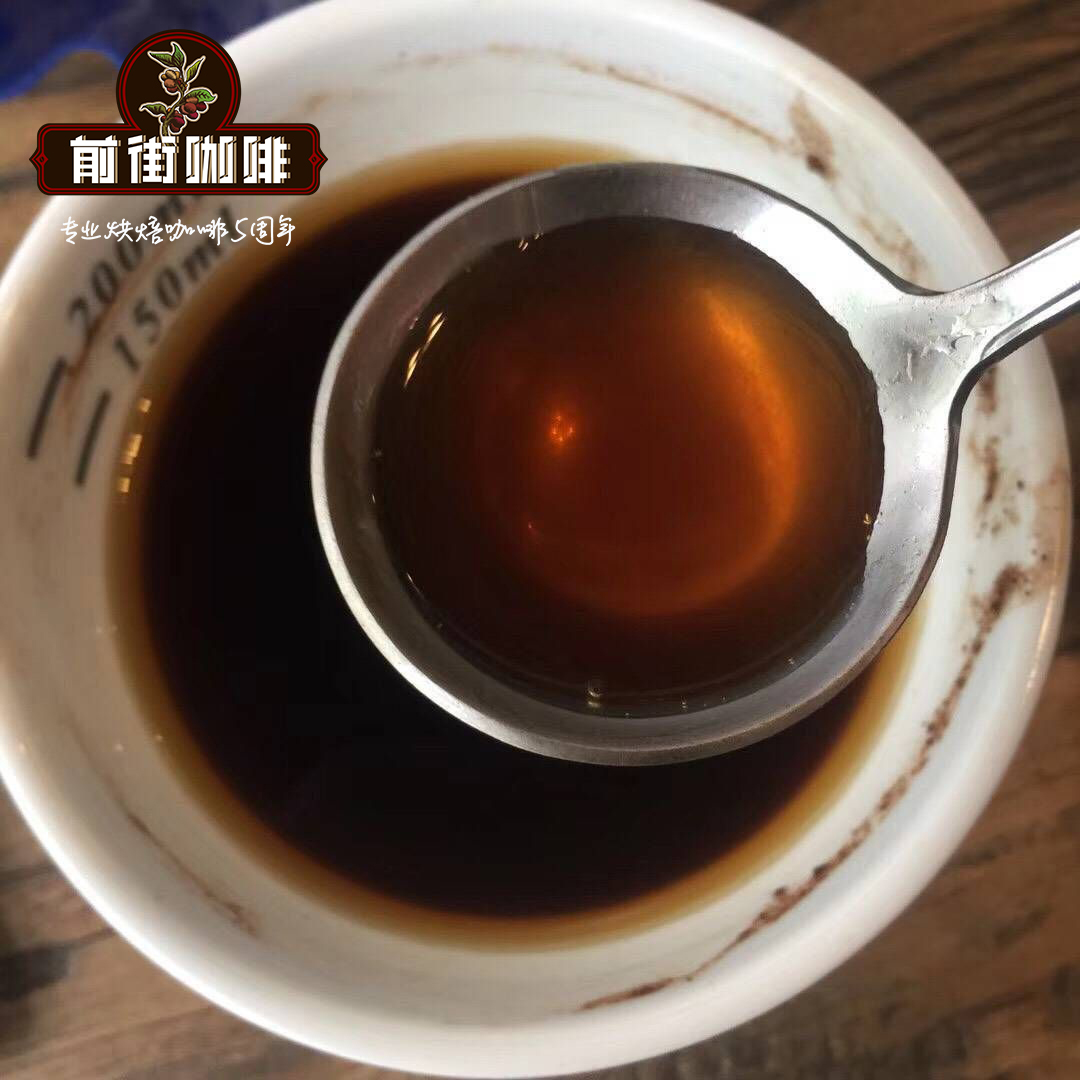What are the famous coffee beans in Africa? How do you drink African coffee? What's a good brand of African coffee?

Professional coffee knowledge exchange more coffee bean information please follow the coffee workshop (Wechat official account cafe_style)
African coffee is mainly distributed in the strips of the East African Plateau, starting from Yemen and Ethiopia in the north, then branching into Kenya and Tanzania near the sea, as well as three small countries in the heart of Africa, Uganda, Rwanda and Burundi, and finally to Malawi in the southernmost, forming an African coffee belt that stretches thousands of kilometers.
No matter from a historical or geographical point of view, this distribution is closely related. It was transmitted from Ethiopia, the hometown of coffee, to Yemen. In the era of great navigation, which began in the 17th century, coffee cultivation spread to all parts of the world. After 300 years, he returned to Kenya next door to Ethiopia, the hometown of coffee, at the end of the 19th century. The cultivation of African coffee has a close relationship with history. In fact, it also has a planting environment that is closely related to geography.
East African Great Rift Valley (Great Rift Valley)
The East African Great Rift Valley, also known as the East African Great Graben, is commonly known as the largest "scar" on the earth. It is located in eastern Africa. It is one of the earliest birthplaces of human civilization, and the crust has experienced plate movement for millions of years. At the junction of the African plate and the Indian Ocean plate, the lower mantle of the crust is upwelling, thinning and splitting the crust to form the East African Great Rift Valley, which runs through East Africa as the largest fault zone in the world. It belongs to the growth boundary. Its ecology, geography and human culture are quite unique, starting from the Dead Sea in the north, with quite a number of lakes and volcanoes in the middle, and at the mouth of Mozambique in the south. This long and narrow rift valley is still active along with the Great Rift Valley of East Africa, in the volcanic areas of Kenya and Tanzania, including volcanic topography such as Mount Kilimanjaro, the highest peak in Africa, Lake Tanganyika (1470 meters deep), one of the world's deepest freshwater lakes, and Lake Victoria, the second largest freshwater lake in the world, and the graben, the growth environment of the world's high-quality coffee is bred on the alpine slopes in the foothills. It also shapes the rich taste of African boutique coffee.
Coffee producing areas in Africa
Ethiopia
Ethiopia, a landlocked country located in the Horn of Africa, is the most populous landlocked country in the world. Ethiopia is regarded as the birthplace of coffee-Arabica species (Arabica). It has rich native varieties and a wide range of genetic sequences, many of which can not be found in other countries. Coffee in Ethiopia is mostly grown by small farmers on their own small farms or in wild and semi-wild environments, and nearly 15 million people across the country are involved in growing and processing coffee beans. As the birthplace of Arabica coffee varieties, coffee consumption dates back to the 10th century, when the first African nomads to eat coffee fruits (coffee cherries / coffee cherries) mixed coffee beans, oil and spices into refreshing and refreshing foods. Coffee farmers in Ethiopia mostly grow and harvest coffee by hand, in conjunction with the Coffee and Tea Development Department set up by the local government to improve and manage all coffee beans.
Kafa Forest, Ethiopia
The most primitive Kafa wild jungle in Ethiopia, the coffee trees planted in the jungle are all part of the wild forest ecology and grow naturally under the protection of rainforest trees, and litter is the best natural organic fertilizer.
Many people think that Ethiopia is the birthplace of coffee because the first coffee tree was found in the ancient "Abyssinia" Abyssinia, which is now Ethiopia. The area where these trees bloom is called "Kaffa", and the trees are called "Kafa", which is probably the original pronunciation of coffee. The Kafa forest is the most primitive forest in Ethiopia, and the coffee beans planted are also part of the wild forest ecology; all because the wild ancient tree species are tall and difficult to manage, most farmers adopt a laissez-faire approach. Draw the essence of day and night from altitude, climate, and the most primitive mountain forests. Ethiopian beans are full of chocolate and wine acidity, mild taste, coffee acidity gently, moderately and comfortably left on the tip of the tongue. The rosy summer village of Qianjie Coffee is located in the Kafa Forest, where the rosy summer of the producing area has typical African regional characteristics. In front of the street, it is recommended to use cake cups / 91-92 ℃ / 1 15 / time for two minutes.
Sidamo
There are eight major coffee producing areas in Ethiopia: Ekempti, Limu, Illubabor, Djimma, Harrar, Teppi/Bebeka, Sidamo and Yirgacheffe. Ethiopian coffee is highly rated in Taiwan, especially the Ethiopian Harrar.
The three well-known producing areas, Sidamo and Yirgacheffe, are particularly interested and loved. Sidama province is located in the south of Ethiopia, with Arsi province in the north, Bale province in the east and Gamu Gofa province in the west. The jurisdiction of Sidama province includes two well-known producing areas, Yirgacheffe and Kochere. The industry is dominated by agriculture, and the coffee growing area is located around the East African Great Rift Valley (Great Rift Valley). The Sidamo producing area (Sidamo) is located in southern Ethiopia. The industry here is dominated by agriculture, and the coffee-growing area is located around the East African Great Rift Valley (Great Rift Valley). The largest town in Sidamo province is Hawassa, which is an important local coffee export distribution center. The coffee flavor of Sidamo is very diverse, because of the different soil composition, regional microclimate and countless native coffee varieties, the coffee produced in each urban area has obvious differences and characteristics. The sakui and candles of Qianjie coffee all come from Sidamo. For these kinds of coffee, it is recommended to use V60 filter cup, the water temperature is about 89-90 degrees, and the brewing time is one minute and 50 seconds.
Tanzania
East Africa is the producer of many fine coffee, including Kenya, Ethiopia, Rwanda and so on. Tanzania is another good coffee producer in East Africa.
Coffee is the largest crop in Tanzania. About 450000 people are engaged in coffee-related agriculture. Due to its proximity to Kenya, the flavor of Tanzanian coffee tends to be similar to that of Kenyan coffee, but because of inconvenient transportation and backward basic coffee equipment, coffee is often contaminated during transportation or damaged due to insufficient equipment in the treatment process, resulting in a bad impression of Tanzanian coffee. It is thought that the overall sour quality of Tanzanian coffee is less fresh and less strong, but in the past two years, the southern Ruvuma producing area near the Indian Ocean has convenient transportation conditions, coupled with the contract with European and American raw bean merchants to place the order before releasing the coffee to ensure the quality of the coffee. The main tree species of coffee in Tanzania is Arabica, which is treated by natural washing. The coffee grade is the same as that in Kenya, and the AAA grade is the best. There are two kinds of pipes for the sale of coffee: auction and direct sale.
Burundi
Located in the eastern part of Africa, Burundi is a small landlocked country that does not rely on the sea. The land area of the country is only 28000 square kilometers, but 90 per cent of the people mainly earn from agriculture, of which coffee accounts for 80 per cent of agriculture. The coffee industry here has literally saved the lives and lives of most people. It is conceivable that local residents attach importance to the cultivation of coffee.
Although Burundi is a member of the East African Community (East African Community,EAC), it is also one of the poorest countries in the world. Due to the long-term colonization of Burundi by Belgium, the official language is still French, which is similar to that of Rwanda, a small neighboring country, but in order to integrate with other English-speaking powers in East Africa (Kenya, Tanzania and Uganda), Burundi is also following in the footsteps of Rwanda in promoting English. Burundi is surrounded by Rwanda, Tanzania and Congo to the north, east and west, respectively, and more than half of its border with the Democratic Republic of the Congo lies on the famous Lake Tanganyika. Located in the steep rift valley of East Africa, Burundi has complex terrain, and the magnificent ridge on the east bank of Lake Tanganyika is also a watershed between the Nile River system and the Congo River system of two major rivers in Africa, inherently known as "Heart of Africa" (The heart of Africa). Qianjie coffee is recommended to use 90 degree water with V60 filter cup, brewing time in about two minutes, with some peanut clothes, Brin, citrus flavor.
Burundian coffee beans are mainly bourbon varieties, most of which grow at a high altitude of 1700-2000m. Local farmers crisscross with bananas and other beans. Coffee growing areas are mostly concentrated in Kayanza and Ngozi producing areas, mostly planted by small farmers, and then sent to large washing plants.
Rwanda
Rwandan coffee is the most popular African coffee after Kenya and Ethiopia. But unlike the two famous producing countries, it does not have a long history of planting, let alone native varieties everywhere in the wild. This small African country is a fire Phoenix that has been reborn after robbery.
Rwanda (Rwanda), known as the Land of a Thousand Hills, sits above the equator and is surrounded by East African States such as Congo, Uganda, Tanzania and Burundi. Geographically, it has suitable conditions for growing coffee, but since it was introduced by German missionaries in 1904, Rwandan coffee has been poorly handled commercial grade, most of which have been exported to the sovereign country of Belgium. The promotion of boutique coffee production began only after the ravages of war and after the economy got back on track.
With the support of the government, farmers have changed from rough home treatment to transporting freshly harvested fruit to a nearby water washing station (Coffee Washing Station) for full washing treatment. In a short period of 12 years, the number of washing stations across the country has increased from two to 220. It is now all private, that is, owned by exporters or farmers' cooperatives. Due to the small average area of farmland (less than 200 coffee trees per farm), about 50 to 100 farms are served at each station. NAEB employs 200 botanists and cup surveyors to regularly check quality at washing stations and educate farmers about soil management, organic planting, pruning, disinfestation and picking.
Strictly control the speed of air drying
Bourbon accounts for more than 90% of Rwanda's production. A small number of farmers grow bourbon variants BM-139 and Jackson. There are more mountains in the south and west, and water washing stations are also more famous. For example, Gitesi, Huye Mountain, Mibirizi, etc. Compared with drying on concrete in Central America, Rwanda will cover parchment coffee on an African bed with canvas to control the rate of air drying and slowly reduce the water content of the beans to 11% of the target in 10 to 15 days. Compared with sunlight exposure, this method helps to retain organic matter.
Rwanda is the first African country to host COE events. This is the fifth year. In taste, Rwanda coffee has obvious floral and fruity aromas, and tastes as smooth as tea. The balance is the highest in the United States of Africa.
Qianjie coffee: Guangzhou bakery, the store is small but a variety of beans, you can find a variety of unknown beans, but also provide online store services. Https://shop104210103.taobao.com
Important Notice :
前街咖啡 FrontStreet Coffee has moved to new addredd:
FrontStreet Coffee Address: 315,Donghua East Road,GuangZhou
Tel:020 38364473
- Prev

Hot search on Starbucks Hidden menu! Star father version of "Yuanyang Milk Tea" is popular!
Professional coffee knowledge exchange more coffee bean information please follow the coffee workshop (Wechat official account cafe_style) recently, recently, father Xing has been on Weibo hot search! Mandarin duck milk tea, Starbucks' latest hidden menu strategy, has become a hit again. It's not a special tune this time, Starbucks special formula has been exposed! Starbucks male partner special hidden menu, you can flirt with your partner again!
- Next

How to make African coffee? What is African coffee brand? What are African coffee producing areas?
Professional coffee knowledge exchange More coffee bean information Please pay attention to coffee workshop (Weixin Official Accounts cafe_style) When it comes to Africa, Ethiopian coffee is a classic. Ethiopia, after all, has long been regarded as the birthplace of coffee. When you learn how coffee is processed locally, you can probably understand that this imperial status is deserved. Even in the worst
Related
- What documents do you need to go through to open a coffee shop? coffee shop coffee shop certificate processing process
- How to purchase Coffee beans in small Cafe how to choose a suitable supplier for domestic Coffee supply Company
- How to drink Starbucks Fragrance White Coffee? how to make Australian White Coffee? what Italian coffee beans are recommended?
- The Story of Flora Coffee: the name of Flora Coffee Bean and the implication of the Flowers on Florna Coffee
- How much does a cup of coffee cost? How much is the profit of a cup of coffee? What is the profit of the coffee shop in a year?
- Yunnan small Coffee, known as "fragrant Coffee", introduces the characteristics of Alpine Arabica Coffee producing areas in Yunnan, China
- 2023 latest Starbucks full menu price list how much is a cup of Starbucks coffee what is better to drink the most popular hot and cold drinks recommended
- Starbucks different kinds of Coffee Price list Starbucks menu 2023 Top Ten Best drinks in Starbucks
- Starbucks Spring praise Comprehensive matching Coffee Bean theme Story Packaging implication and taste description
- The cost of a cup of coffee latte American coffee cost price and selling price

